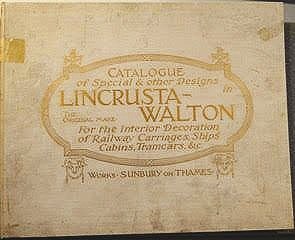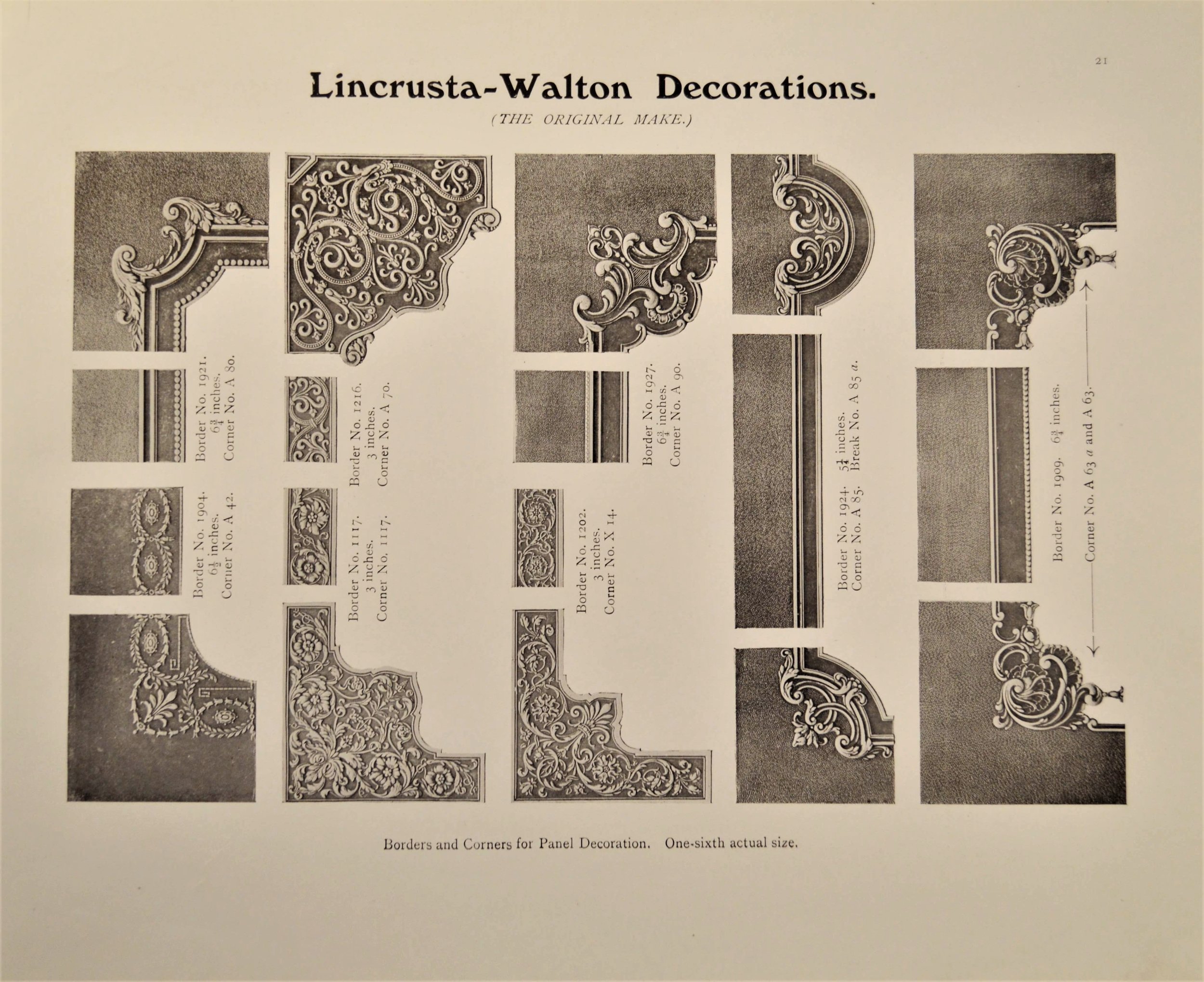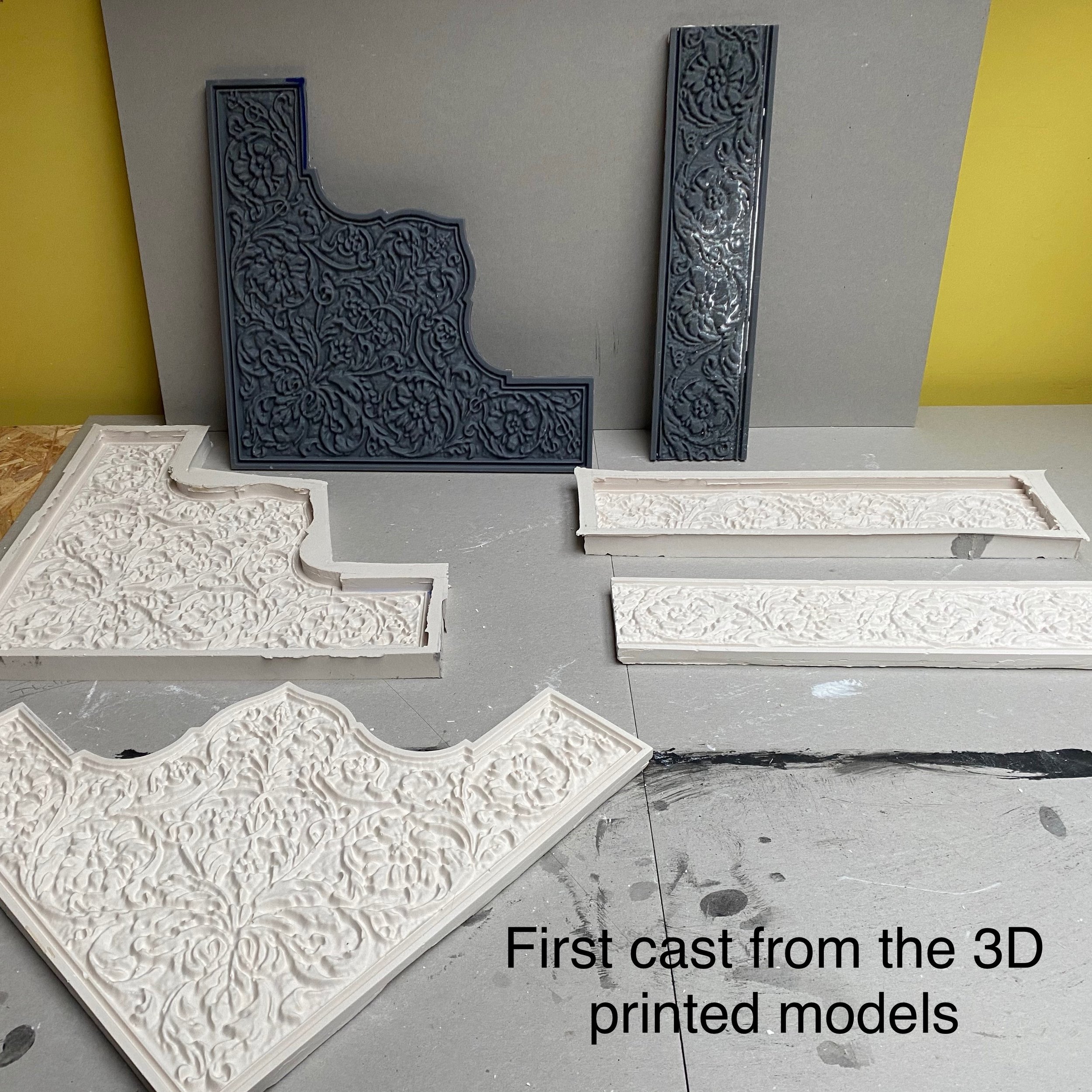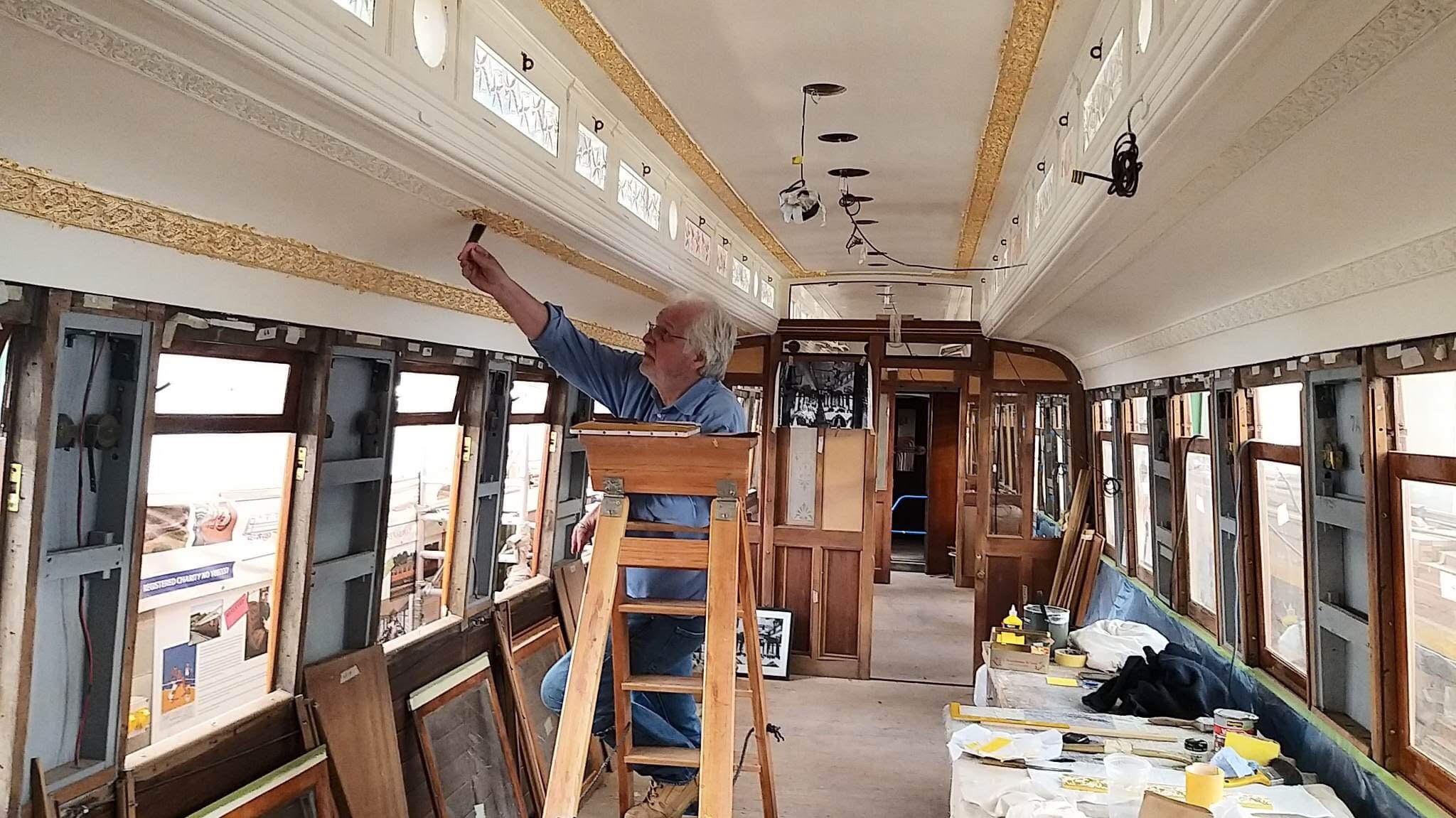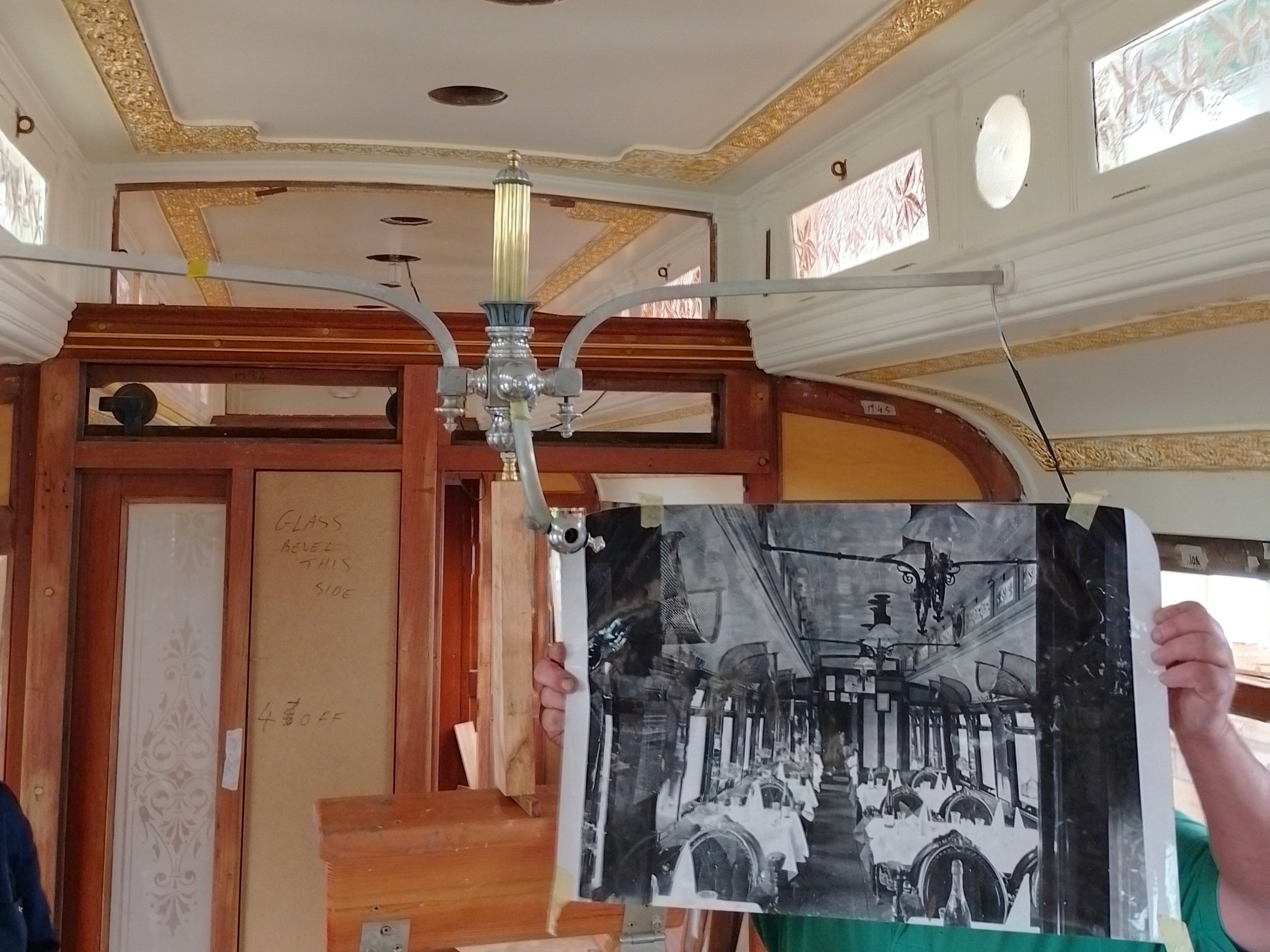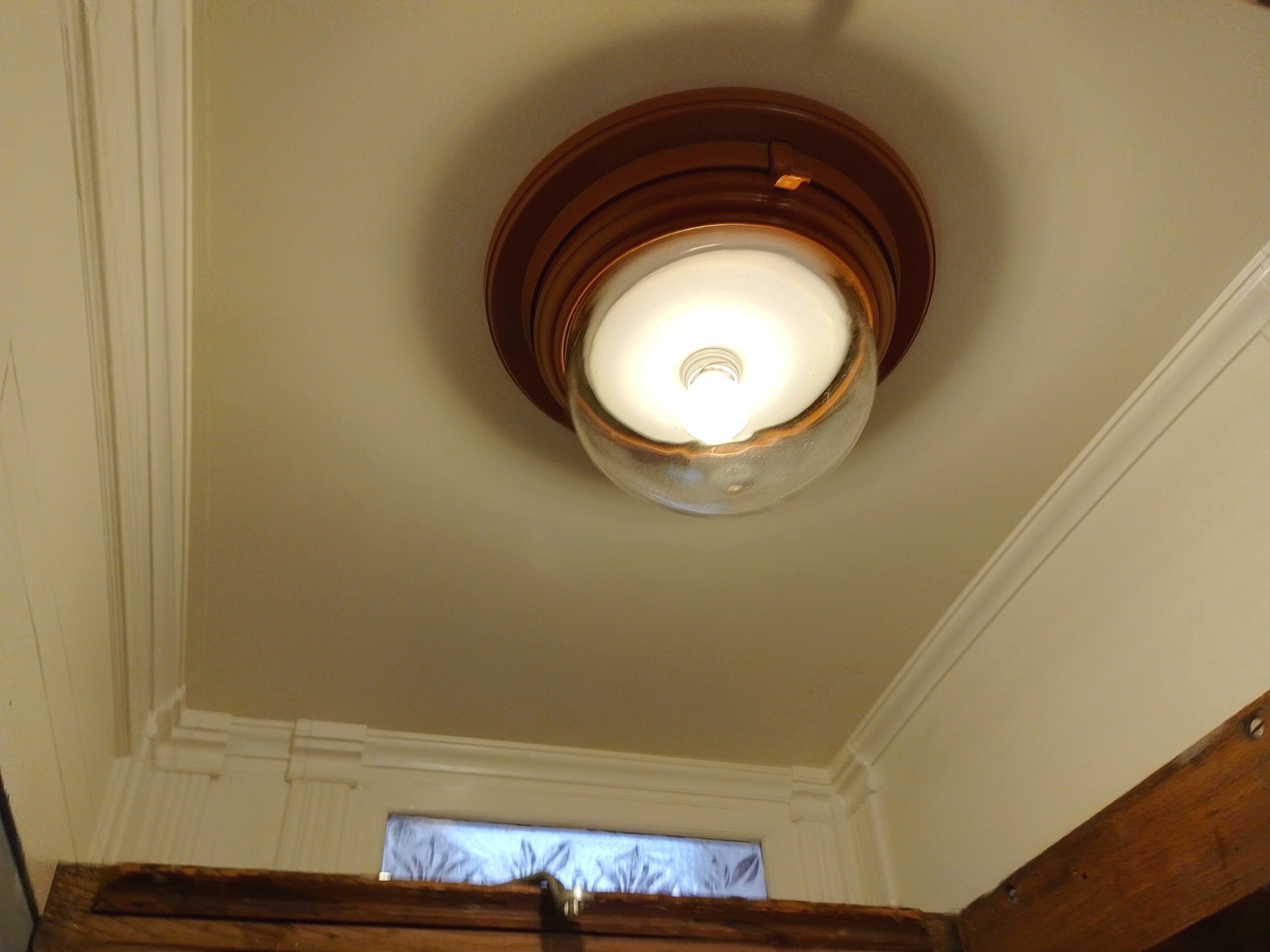The Train Job - A Restoration Journey of ECJS 189
July 2023
Restoration of a Victorian Railway Dining Experience – The Journey so Far
This month’s blog has something for everyone, whether you enjoy social history, the Victorian era, or the nostalgia of vintage steam train travel - perhaps you are an engineer or fan of Bradshaw’s Guide and following Michael Portillo’s Great British Railway Journeys (BBC2). The rescue and restoration of Victorian dining carriage ECJS 189 has been quite a journey so far and we are proud to have been a small part of it.
ECJS Dining Car No.189 is one of the world’s oldest surviving dining carriages, yet in 1998 it was a week away from destruction. Once working on the London – Edinburgh/ Aberdeen ‘races to the North’ run and part of the Flying Scotsman train.
ECJS 189 c. 1909, photo credit LNERCA.
A Potted Operational History.
(With thanks to Dave Cullingworth, Secretary of LNER Coach Association).
‘East Coast Joint Stock’ was the name given to carriages built by the collaboration of three railway companies that made up ‘East Coast Railway’. Services ran on the east coast route from London Kings Cross to Edinburgh/ Aberdeen. ECR was formed by the Great Northern Railway, North Eastern Railway and North British Railway. By building carriages under the ECJS brand and sharing them between the three companies it allowed the same set of carriages to run the whole distance with just crew and loco changes enroute.
Originally built by the Great Northern Railway Carriage works in Doncaster in 1894, 189 was a third-class dining car with 42 seats in three saloons. Designed to give a more comfortable ride, the bogie carriage is longer than the earlier four and six-wheeled stock, with gangway connections which allowed passengers to walk through the train and access toilets.
189 was one of four third-class diners built to that diagram. It would have been marshalled next to a kitchen car, (ironically a six-wheeled carriage!), and a first-class diner would have been marshalled at the other end of the kitchen car.
Catering available on the train.
Previously there would have been a 20 minute stop at York for long distance passengers to have a meal in the station buffet. This must have been a real rush and not a very pleasant experience! Prior to this, snacks would have been sold on the stations and offered through the carriage windows during layover at major stops.
189 had several improvements during its 33 year operational life. The early primitive and claustrophobic side gangways were replaced with standard Pullman gangways and later in life gas lighting was replaced with electric. The biggest change was the removal of nine seats and tables in one of the saloons, relocation of a partition and addition of a small pantry. This change coincided with the withdrawal of the six-wheeled kitchen cars and replacement with full kitchen restaurant cars in around 1909. This is the condition that 189 is being restored to.
On 1st Jan 1923, the three companies that ran east coast services were amalgamated into the London & North & Eastern Railway (LNER), and East Coast Railway became redundant. 189 would have been relegated to secondary duties in LNER days, probably more of a bar car with drinks served from the pantry area, before being finally withdrawn from service in 1927.
Like many wooden bodies of carriages of the day, being constructed in durable and rot resistant teak, 189 found further use as a workshop on a farm in Yorkshire, where it remained for six decades before being salvaged.
The Heritage Lincrusta Border Brought Back to Life.
The polished gold engraved wood, fine etched glass, painted glass, and clerestory roof make this a craftsman’s delight. Several years in to the restoration, we were delighted to be involved on a small part of the journey of ECJS 189 alongside conservator, Helena Brazil of Lincrusta Heritage.
Lincrusta-Walton, as the company was then known, had a special range of designs specifically for railway carriages.
With the original black and white carriage photograph of 189 as the only reference, Helena first identified the Lincrusta border as one of two probable designs. Directors of LNERCA chose the design to reinstate, then Helena arranged for samples to be 3D printed from this 2D catalogue image.
Next Helena asked Frank to use his skills to ‘first cast’ and then add in the fine detail in by hand before recasting to prepare masters for mould making.
A Week in the LNERCA workshop, Pickering
Affectionately referred to as ‘the train job’ - not to be confused with the Great Train Robbery, ha-ha - and one of those opportunities we may never see again. Two years ago, we spent a week in Pickering with Helena reproducing 450 feet of ‘straights’ and 12 of the corner designs on site then we re-instated the Lincrusta borders to the Clerestory ceilings. Amanda came along to be runner and record the process, was also appointed ‘chief stirrer’. Just up line on the North Yorkshire Moors Railway, Tom Cruise and co-star Hayley Attwell had been seen filming with the Mission Impossible team, for the latest film released this month, ‘Dead Reckoning Part One’.
Our mission threw up it’s own challenges. The curved roof proved difficult when installing the border, despite using pieces fresh out of the mould. But, the LNERCA workshop engineers, experts at problem-solving, were on hand and quickly produced their wooden template, which we reversed to lay our mould on to successfully cast the curved sections needed.
ECJS 189 - The Restoration Continues
The Next ‘Mission Impossible’ Challenge - Engineering replica Gasolier lighting
We have continued to follow the restoration journey of 189. Bruce Robinson was asked to help with remanufacturing lighting fixtures – a challenge with only the original black and white photograph as a reference!
Below, you can see photos kindly sent to us by Bruce Robinson, from his second visit offering up his replica gasolier fixture following design modification. In the third photo you can see one of three Pintsch inverted mantle lamps, also supplied by Bruce, for the vestibules and pantry.
189 is slowly returning back to its 1909 condition, and the painstaking attention to detail continues.
LNER Coach Association
LNERCA is a volunteer run charity formed in 1979 to preserve and restore ex-LNER and constituent companies’ carriages that would otherwise have been scrapped. This work by the LNERCA now means that we can once again experience what it was like to travel in the pre-nationalisation era.
The LNERCA collections have carriages dating from 1890 up to 1950. Funding for its restoration projects comes from membership subscriptions, bequests, charitable donations, and grants. The cost of a typical restoration project is anything upwards from £50,000, even though much of the labour required is given voluntarily by LNERCA members.
New members and working volunteers are welcome, if you are interested in helping to preserve a unique collection of historic railway carriages, please go to the LNERCA website HERE
We hope you have enjoyed reading about the continuing restoration journey of ECJS 189, we welcome your comments below.
If you have any enquires, please email us at email@frankholmesltd.com
Until next time,
Frank and Amanda
DISCLAIMER:
This is a personal blog. Any views or opinions represented in this blog are personal. They do not represent those of people or organisations that the company may or may not be associated with. Perfectly Frank blog posts are for information and entertainment only. Information is correct only to the best of our knowledge. Frank Holmes Ltd is not liable for any actions undertaken by readers after reading these posts. Please take advice from a qualified professional before making any changes to your property or its contents.
Copyright for all posts: Frank Holmes Ltd.






